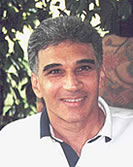STARTLING OBSERVATION
In my experience as a tennis coach, the more I learn about players' own individual styles of play, the more I question what really are bad habits in tennis. How do you describe a bad habit? Everyone is so worried about developing bad habits that they run from teaching pro to teaching pro and stress themselves out attempting to stave off the dreaded 'bad habit'! They read books and tennis magazines and study videos seeking answers to the ultimate tennis strokes.
Now do not get me wrong. I'm not telling you that there are no guidelines to follow when learning to play tennis. What I am telling you is these guidelines are far too rigid and in many cases totally incorrect! Do you know how many 'bad habits' there are in tennis history of the past that are now not only accepted as correct, but often preferred?
From the 1950's through the 60's and on, tennis pros were teaching that holding two hands on the racket for the backhand was a bad habit. They claimed two hands limited the player's reach and had too many drawbacks. So pros insisted that players stick with the one-handed backhand. Onto the professional scene came the likes of Chris Evert, Jimmy Connors and Bjiorn Borg. All with the two-handed backhand 'bad habit.' Well now maybe it's not all that bad! So the tennis professionals and amateurs slowly embraced the two-handed backhand to the point where nowadays the majority of players have the two-handed backhand 'bad habit.'
An interesting historical fact to note is that in the 1937 Australian Open between Vivian McGrath and John Bromwich both players had two-handed backhands. Was it accepted then? Not even close! In fact, it was ridiculed. Below is a searing excerpt from the Time Magazine 1937 archives specifically describing the experts' response to Vivian McGrath and his backhand. See what you think?
Time Magazine, Monday, 10 May 1937:
"When Australia's Vivian McGrath appeared on the international tennis scene four years ago, experts could not have been more astonished had he been a kangaroo. For all backhand shots McGrath held his racket with both hands. For a first-class tennist to do such a thing was so unthinkable that tennis experts, instead of trying to explain it, simply regarded McGrath as an antipodean freak."
Lots of "antipodean freaks" are around today. You may even be one!
And how about the swinging volley that at one time was considered a bad habit? Just another 'bad habit' gone right! Don't forget the big looping forehand of Bjiorn Borg with massive topspin... again another 'bad habit' gone right! The so-called experts said he could not win Wimbledon with those big looping strokes. He won five victories in a row at Wimbledon and the experts were nowhere to be found. Now everyone has the 'bad habit' of hitting with a looping forehand.
How about the 'bad habit' of tossing the ball high on the serve. I remember watching the great Ivan Lendl toss the ball so high on his serve it would go off the television screen. His timing was set for that type of ball toss. I say... leave him alone!
Not too long ago hitting with an open stance on groundstrokes was a 'bad habit.' Now it is becoming the standard.
Can you see why I do not teach with excessive technical information? First, learning is an individual process. A bad habit for one player is fine for another. Second, the tennis profession is constantly changing the idea of what a 'bad habit' is. Third, and this is the key, most players' 'bad habits' are just part of the learning process. An example would be taking the racket back late on groundstokes. This is nothing to worry about. Taking the racket back late is just part of the individual learning process. You do NOT have to force the racket back. Eventually preparing the racket properly will resolve itself. This is a timing issue that will be resolved by hitting thousands of balls... no need to over-think this so-called bad habit.
How about the bad habit of falling off-balance when hitting a stroke? Not a problem. Just keep swinging and in time your balance will improve. Falling off-balance is just a phase of learning that all players MUST go through.
Roger Federer has lots of 'bad habits.' He jumps up on many of his groundstrokes. He hits his forehand with his elbow too far from his body and, according to one commentator, he also comes too far across his body on his forehand. The commentator then said that Roger makes it work, so leave him alone. However most players do not execute the forehand that way. I have also seen Roger hit the swinging volley 'bad habit.' If you were to do some of these things you would be immediately sent to your room without supper and then off to the local pro for an overhaul!
Hmmm, I wonder when Roger acquired all these 'bad habits'? Why didn't anyone correct him? Aha, I have the answer! In the August 2005 Tennis Life Magazine, Roger's mother was interviewed. She explained that when Roger was younger than 8 years old he would hit the tennis ball against a backboard for hours while she and her husband were playing competitive tennis. Roger would only rest to eat or get a drink. Apparently Roger Federer played tennis alone for hours and hours and hours and hours. Little by little he developed all these 'bad habits' and has won 12 grand slam tournaments with them!
STARTLING CONCLUSION
There is no way you can monitor every little movement in tennis each minute you play. Practice some of the simple techniques which you have learned, but do not stress yourself out if your stroke is not perfect. A 'bad habit' today could be the next great shot of the future. Just like remembering "the next shot is more important then the last mistake," remember, when it comes to the process of learning, keep moving on. The wisdom of the body is smarter than you are!!! Spontaneous and intuitive playing will come to the rescue after you have spent hours and hours and hours hitting thousands of tennis balls. Have a great day... and a great game!


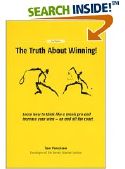
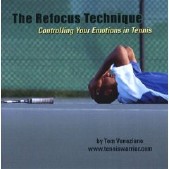
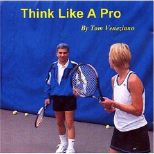
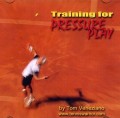



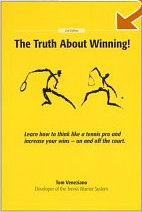
 You will join 13,000 other subscribers in receiving news of updates to the Tennis Server along with monthly tennis tips from tennis pro Tom Veneziano.
You will join 13,000 other subscribers in receiving news of updates to the Tennis Server along with monthly tennis tips from tennis pro Tom Veneziano. 